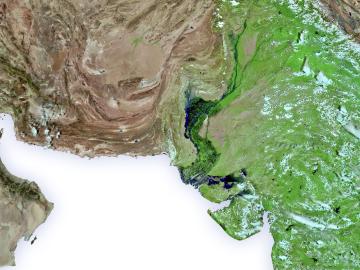
Filter News
Area of Research
- (-) Biology and Environment (177)
- (-) Neutron Science (190)
- (-) Supercomputing (311)
- Advanced Manufacturing (34)
- Biological Systems (18)
- Biology and Soft Matter (5)
- Building Technologies (12)
- Chemical and Engineering Materials (4)
- Chemistry and Physics at Interfaces (11)
- Clean Energy (522)
- Climate and Environmental Systems (14)
- Computational Biology (6)
- Computational Chemistry (5)
- Computational Engineering (5)
- Computer Science (19)
- Data (1)
- Earth Sciences (1)
- Electricity and Smart Grid (3)
- Energy Frontier Research Centers (14)
- Energy Sciences (5)
- Fossil Energy (3)
- Fuel Cycle Science and Technology (3)
- Functional Materials for Energy (16)
- Fusion and Fission (54)
- Fusion Energy (17)
- Geographic Information Science and Technology (3)
- Isotope Development and Production (3)
- Isotopes (35)
- Materials (433)
- Materials Characterization (2)
- Materials for Computing (36)
- Materials Synthesis from Atoms to Systems (13)
- Materials Under Extremes (12)
- Mathematics (1)
- National Security (80)
- Neutron Data Analysis and Visualization (4)
- Nuclear Science and Technology (74)
- Nuclear Systems Modeling, Simulation and Validation (3)
- Nuclear Systems Technology (1)
- Quantum Condensed Matter (4)
- Quantum information Science (9)
- Reactor Technology (1)
- Renewable Energy (4)
- Sensors and Controls (5)
- Transportation Systems (11)
News Type
News Topics
- 3-D Printing/Advanced Manufacturing (17)
- Advanced Reactors (3)
- Artificial Intelligence (43)
- Big Data (26)
- Bioenergy (52)
- Biology (76)
- Biomedical (36)
- Biotechnology (14)
- Buildings (6)
- Chemical Sciences (15)
- Clean Water (13)
- Climate Change (51)
- Composites (5)
- Computer Science (107)
- Coronavirus (24)
- Critical Materials (4)
- Cybersecurity (9)
- Decarbonization (24)
- Energy Storage (17)
- Environment (109)
- Exascale Computing (24)
- Fossil Energy (1)
- Frontier (29)
- Fusion (2)
- Grid (7)
- High-Performance Computing (52)
- Hydropower (8)
- Isotopes (2)
- Machine Learning (20)
- Materials (36)
- Materials Science (38)
- Mathematics (3)
- Mercury (7)
- Microscopy (17)
- Molten Salt (1)
- Nanotechnology (24)
- National Security (9)
- Net Zero (3)
- Neutron Science (101)
- Nuclear Energy (8)
- Partnerships (5)
- Physics (17)
- Polymers (5)
- Quantum Computing (19)
- Quantum Science (29)
- Renewable Energy (1)
- Security (6)
- Simulation (23)
- Software (1)
- Space Exploration (5)
- Summit (46)
- Sustainable Energy (36)
- Transformational Challenge Reactor (1)
- Transportation (12)
Media Contacts

Scientists at ORNL used their expertise in quantum biology, artificial intelligence and bioengineering to improve how CRISPR Cas9 genome editing tools work on organisms like microbes that can be modified to produce renewable fuels and chemicals.

Hilda Klasky, an R&D staff member in the Scalable Biomedical Modeling group at ORNL, has been selected as a senior member of the Association of Computing Machinery, or ACM.

A type of peat moss has surprised scientists with its climate resilience: Sphagnum divinum is actively speciating in response to hot, dry conditions.

Currently, the biggest hurdle for electric vehicles, or EVs, is the development of advanced battery technology to extend driving range, safety and reliability.

Using neutrons to see the additive manufacturing process at the atomic level, scientists have shown that they can measure strain in a material as it evolves and track how atoms move in response to stress.

A new study by researchers at the Department of Energy’s Oak Ridge National Laboratory looks at some of the influences that could be driving the increasingly severe weather over Pakistan.
To better understand important dynamics at play in flood-prone coastal areas, Oak Ridge National Laboratory scientists working on simulations of Earth’s carbon and nutrient cycles paid a visit to experimentalists gathering data in a Texas wetland.

As current courses through a battery, its materials erode over time. Mechanical influences such as stress and strain affect this trajectory, although their impacts on battery efficacy and longevity are not fully understood.

ORNL’s Fulvia Pilat and Karren More recently participated in the inaugural 2023 Nanotechnology Infrastructure Leaders Summit and Workshop at the White House.

In 1993 as data managers at ORNL began compiling observations from field experiments for the National Aeronautics and Space Administration, the information fit on compact discs and was mailed to users along with printed manuals.


